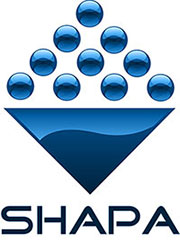Safe to Breathe
.
For more than a century there have been efforts to improve air
quality in the working environment, both in enclosed factories and other
industrial areas. Even with scant knowledge of respiratory diseases it
had been clear that people were more productive in a cleaner and better
environment
CoSHH (Control of Substances Hazardous to Health) regulations
came into force in 2002 and were simply the culmination of decades of
research and study to enable practical controls over workplace
atmospheres to be established and monitored – practicality and
effectiveness being the guiding principles. Over time dust extraction
gradually became more of a quantifiable science, with particular
attention paid to improving the health of the workforce employees as
well as enhancing product quality. Latterly, however, the term Local
Exhaust Ventilation (LEV) has come into use. More than merely dust
control, it brought into focus fume, vapour and hazardous gases and HSE
set about cementing definitions and establishing exposure limits for a
huge range of airborne contaminants from ever increasing volumes of test
data.
LEV has become the accepted name for the equipment for removing
contaminants from workplace air, with HSE publication EH40/2005
Workplace Exposure Limits being its “bible” – albeit a regularly updated
“bible”. It is obviously important to know what contaminants (or
combination of contaminants) may be present, either produced by or
inherent in the process involved. EH40 defines workplace exposure limits
(WEL) that are allowable under CoSHH regulations. It is incumbent on the
process owner, however, to minimise exposure to the operator by any
practicable means, not simply to “dodge” just below the limit.
Furthermore, EH40 describes how to determine exposure levels by means of
time weighted averages (TWA) and short term exposure limits (STEL). As
mentioned above, these apply to dusts, vapour and gases.
Dissemination of knowledge by properly structured training is
vital to lasting success and maybe even avoiding the risk of prosecution
for negligence. HSE produces guidance for employers and employees alike
and employees are urged to get involved in their own respiratory safety.
Dust and fume hoods should be seen to work effectively, with airflow
indicators as an additional check. Airflow indicators alone do not
guarantee effectiveness of the LEV system, but they should be checked
regularly as part of the operators’ general duties, together with signs
of undue dust deposits, unwanted smells etc. All defects must be
reported promptly.
All parties should cooperate from the outset of the LEV design
process. Suppliers should thoroughly understand the process machinery
and material characteristics, ensuring that the LEV is easy to use and
does not obstruct operator actions.
A competent company should be employed for “annual” testing, able
to test accurately to standards and affix appropriate “tested” labels
and offer advice as appropriate.
The complete LEV design, installation and testing service is
available from within the SHAPA community of companies, to inspire real
confidence at economic cost throughout the lifetime of the installation.
Check out the Equipment Finder at https://www.shapa.co.uk/equipment.php
or download one of the many LEV related technical documents which can be
found at https://www.shapa.co.uk/technical.php or email your enquiry to
info@shapa.co.uk.
Visit www.shapa.co.uk or
email info@shapa.co.uk to
discover more benefits of membership or to find technical partners for
your next project.





















